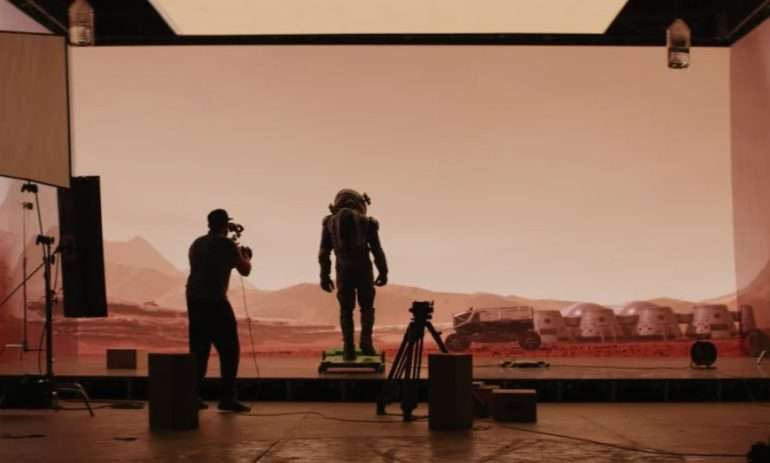Initial reports sparked global concern, painting a potentially catastrophic scenario involving a massive asteroid, dubbed 2023 DW, hurtling towards Earth․ The prospect of a celestial body of this size, estimated to be around 1,100 feet long, impacting our planet understandably caused anxiety․ Thankfully, revised calculations and further observations have drastically reduced the risk, offering a collective sigh of relief․ It turns out the initial trajectory predictions were based on limited data, and a more comprehensive analysis indicates a much lower probability of impact from this particular asteroid․
Understanding Asteroid 2023 DW and Its Initial Threat
The initial alarm surrounding Asteroid 2023 DW stemmed from the fact that early projections, based on only a few weeks of tracking, showed a non-zero probability of it intersecting Earth’s orbit․ This, coupled with its considerable size, made it a topic of considerable discussion and, for some, alarm․ Early estimates placed the potential impact date around Valentine’s Day 2046, adding a layer of ironic discomfort to the situation․ However, it’s crucial to understand the nature of these early predictions and how they are refined over time․
Why Initial Predictions Can Be Misleading
Predicting the trajectory of an asteroid is a complex process, especially in the early stages of observation․ Several factors contribute to the uncertainty:
- Limited Data: The initial trajectory is based on a relatively short period of observation, leading to less accurate calculations․
- Gravitational Influences: The gravitational pull of other celestial bodies (planets, moons, even other asteroids) can subtly alter an asteroid’s path․
- Nongravitational Forces: Factors like the Yarkovsky effect (uneven heating of the asteroid’s surface and subsequent radiation of heat) can also influence its trajectory․
The Revised Assessment: A Much Lower Risk
As astronomers continued to monitor Asteroid 2023 DW, gathering more data and refining their models, the projected risk of impact steadily decreased․ The European Space Agency (ESA), for example, removed the asteroid from its risk list․ NASA’s Center for Near Earth Object Studies (CNEOS) also significantly lowered the probability of impact․ This reduction in risk highlights the importance of continuous monitoring and the refinement of trajectory calculations as more data becomes available․ The revised assessment gives us much more time to prepare even if there was a risk․
What Does This Mean for Earth?
The good news is that the threat posed by Asteroid 2023 DW is now considered to be extremely low․ While it’s impossible to completely eliminate the risk of any asteroid impact, the probability of this particular asteroid hitting Earth is so small that it’s no longer a cause for serious concern․ This situation serves as a valuable reminder of the importance of ongoing asteroid monitoring and the development of planetary defense strategies, but in this specific case, we can breathe a collective sigh of relief․
Ultimately, the story of Asteroid 2023 DW is a testament to the power of scientific observation and the continuous refinement of our understanding of the cosmos․ Even though this particular threat has diminished, it serves as a reminder that vigilance and preparedness are crucial in safeguarding our planet from potential future threats from space․
Looking Ahead: Continued Monitoring and Planetary Defense
While the immediate concern surrounding 2023 DW has subsided, the broader effort to identify, track, and potentially deflect near-Earth objects (NEOs) remains a crucial endeavor․ Organizations like NASA, ESA, and various international collaborations are actively involved in:
- Surveying the Skies: Continuously scanning the heavens to discover new asteroids and comets․
- Refining Trajectory Models: Developing more sophisticated models to accurately predict the long-term paths of NEOs․
- Developing Deflection Technologies: Researching and testing potential methods for altering the trajectory of an asteroid on a collision course with Earth․
Potential Deflection Techniques
Several methods are being explored for deflecting potentially hazardous asteroids, each with its own advantages and challenges:
| Technique | Description | Pros | Cons |
|---|---|---|---|
| Kinetic Impactor | Ramming a spacecraft into the asteroid to alter its velocity․ | Relatively simple and well-understood technology․ | Requires precise targeting and may break the asteroid into smaller pieces․ |
| Gravity Tractor | Using a spacecraft’s gravitational pull to slowly nudge the asteroid off course․ | More controlled and less likely to fragment the asteroid․ | Requires a long lead time and a massive spacecraft․ |
| Nuclear Detonation | Detonating a nuclear device near the asteroid to vaporize part of its surface and alter its trajectory․ | Potentially the most effective method for large asteroids․ | Raises ethical concerns and could potentially fragment the asteroid․ |
The Ongoing Importance of Planetary Defense
Although 2023 DW is no longer a significant threat, it serves as a potent reminder of the ever-present need for planetary defense․ The universe is a dynamic and sometimes dangerous place, and the risk of asteroid impacts is a real and ongoing concern․ The continued investment in NEO detection, tracking, and deflection technologies is essential for safeguarding our planet and ensuring the long-term survival of humanity․ The fact that we can now identify and assess these threats is a remarkable achievement, and continued vigilance is paramount․ Future generations will be relying on our ability to protect the Earth․




